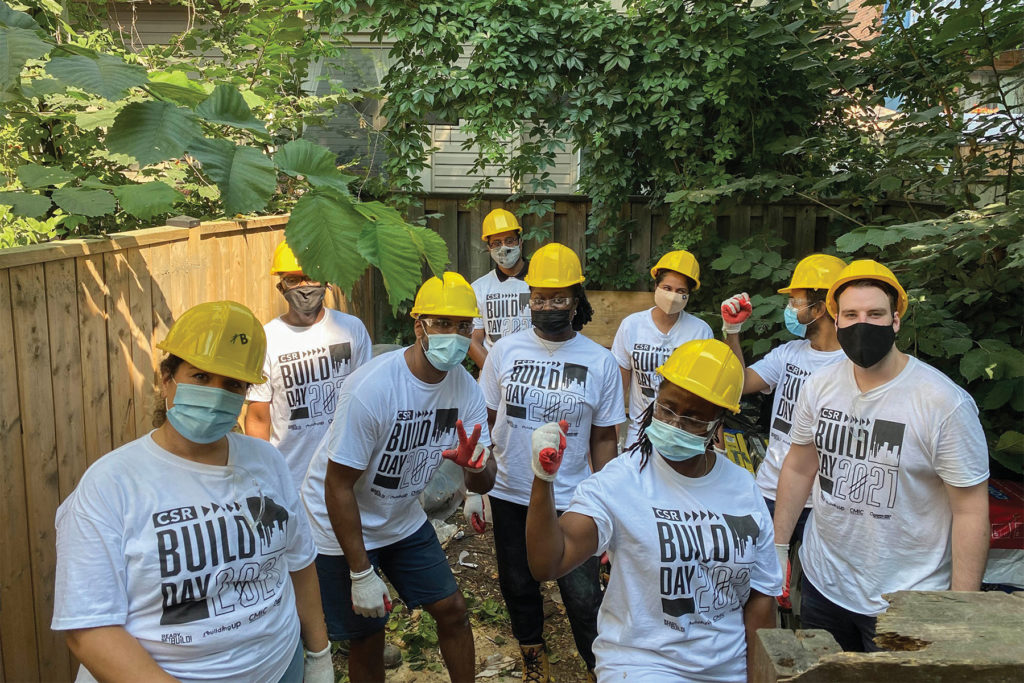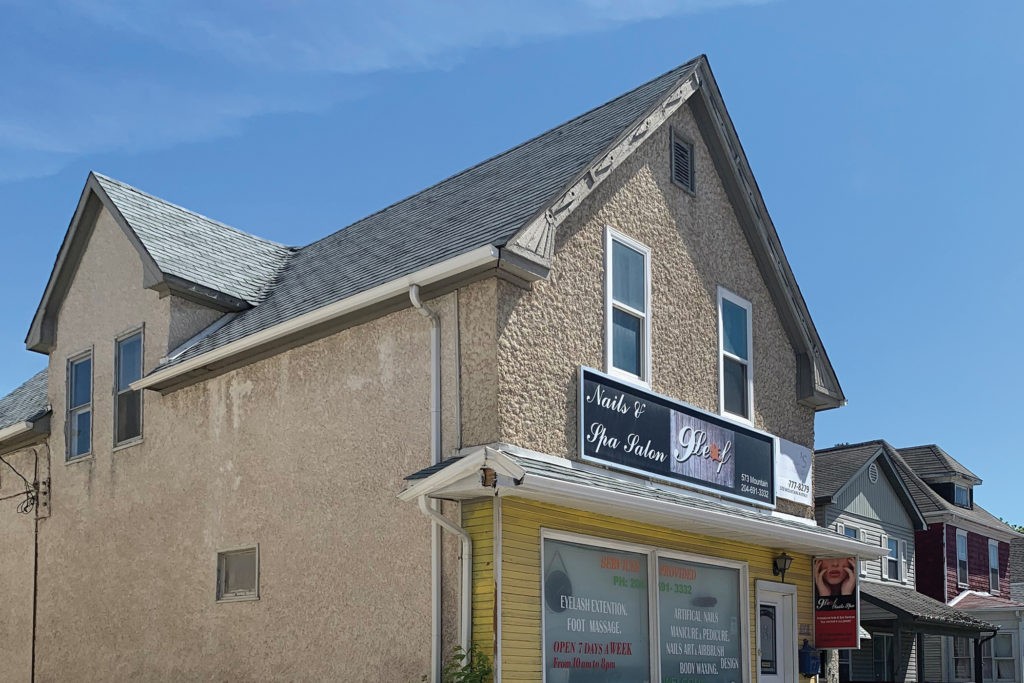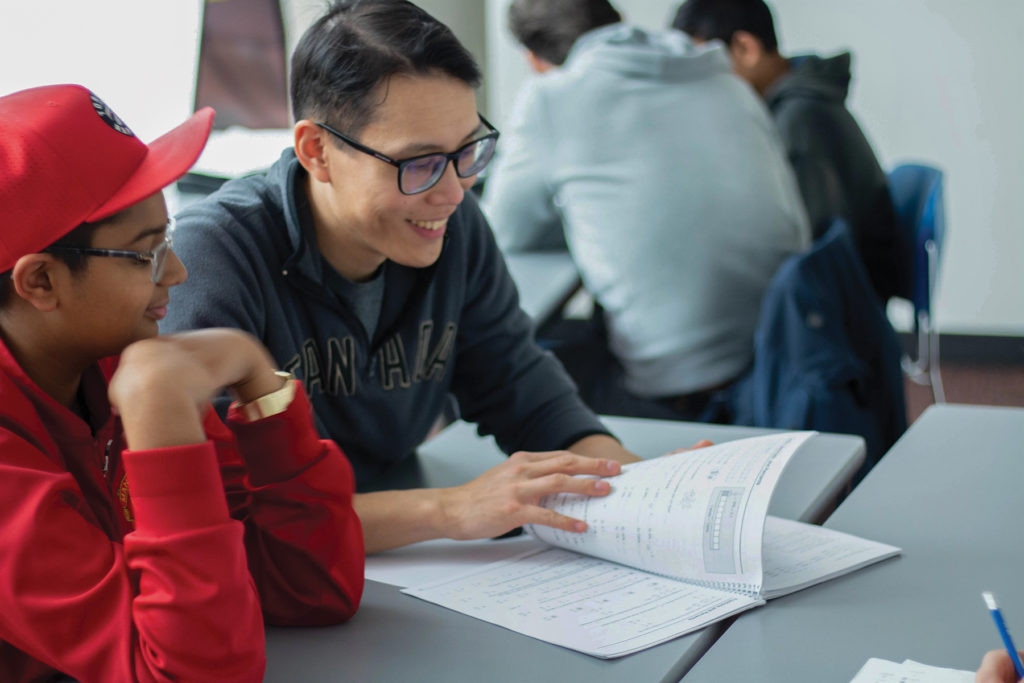The cycle of poverty can be difficult to break. It’s not just about being homeless, though that’s a major consideration. It’s also about being able to enter or re-enter the workforce, and having the skills to do so.
Raising the Roof considers the full picture of homelessness and comes up with concrete, long-term solutions with proven results. We chatted with Director of Resource Development and Communications Leslie Bellingham about Raising the Roof.

Tell us about Raising the Roof’s mission.
Raising the Roof provides national leadership on long-term solutions to homelessness through partnership and collaboration with diverse stakeholders, investment in local communities, and public education.
Our vision is for all Canadians to have access to a safe, stable home and the support they need to achieve their potential.
What inspired your founders to start Raising the Roof?
Raising the Roof was launched in 1996 by members of the Canadian Non-Profit Housing Foundation. The goal was to create a national charity dedicated to finding long-term solutions to homelessness. After receiving a grant from the McConnell Foundation, our team set up shop in an old warehouse in Toronto’s east end.
Raising the Roof launched its first major fundraising campaign to help the homeless. Based in Toronto, the campaign featured a week of comedy events, public education activities, and a gala featuring entertainers. The shows, which later expanded to Halifax and Vancouver, continued to raise funds and awareness for the next 15 years.
In addition, the campaign raised enough money to benefit the Toronto homeless community, help us expand across the country, and introduce our now-famous Toque Tuesday, where toque hats were sold throughout Toronto.
Over the years, Raising the Roof has initiated several high impact public education campaigns and research projects which are informing national policy today, as well as several innovative pilot projects.
Today, we have completed two housing projects in our Reside program, resulting in vacant properties being transformed into homes for people at risk of homelessness, and training people with significant barriers to employment to go on to futures in construction.
What were some of the challenges you encountered?
Raising the Roof has always been about homelessness prevention, which includes our own research and pilot projects. There have been challenges associated with researching the causes of homelessness and ways to prevent it, as well as piloting new, untested, innovative prevention measures.
We have also been an organization that brings together diverse people, organizations, and stakeholders. This has had its own set of challenges, especially as a national organization, learning about unique geographic, cultural, social, and demographic issues across the country.
In every community we are a part of, we have prioritized listening to the local community members who know the needs and resources available in that community.
COVID-19 has also produced some challenges. One way was that the funds raised for the homelessness prevention initiatives were mainly raised through in-person events pre-COVID, so we needed to pivot.
We are looking to reinstate many of these events in a modified fashion this year, but we have also added new distribution channels for our toque sales, distribution through Home Depot stores Canada-wide this coming Toque Campaign.
What do you consider Raising the Roof’s biggest success?
While we’re very proud of our pilot programs and research, our biggest success is our Reside program. The initial projects proved to be so effective, we put all of our resources toward it and have helped end the cycle of poverty for trainees, teaching them hands-on skills and compensating them for their work.
Eighty-five percent of the 147 trainees have obtained permanent full-time employment in the trades after completion of the program.
Raising the Roof not only provides job opportunities, but support for trainees, including mental health counselling, parenting classes, social workers assistance, and financial management courses.
Past Reside program trainee, Edward, has a stable, way-paying career in construction, says his mental health and housing security has improved, and he’s saving to purchase a home.
In terms of the housing projects that the Reside program works on, one of our most recent successes was a renovation that is now currently rented to two young Black women who were previously living in a temporary, emergency youth shelter. Because of the quiet, space and stability, the women are able to pursue their educational goals.
Not only that, the project created 6,000 hours of paid training and saw nearly 87% of trainees go on to unionized apprenticeship programs or full time careers in the construction sector.
What makes your organization unique?
Raising the Roof is unique in that we are concerned primarily with prevention and long-term solutions to homelessness at a national scale. With our Reside program, we are implementing a holistic solution that not only meets immediate needs, but addresses important root causes of homelessness.
Because we have an existing national network of agencies that we support through our Toque Campaign, we are in a unique position to be able to implement the Reside program across the country.
How do you feel Raising the Roof makes the world better?
Raising the Roof makes the world better by connecting people and organizations through projects that solve complex social issues in a holistic manner. The Canadian Observatory on Homelessness has estimated the average cost of an emergency shelter bed is $1,932 per month.
Over 20 years, the cost of one shelter bed would be $463,680. One of our next projects (in Winnipeg), will be creating 10 beds. By investing in this issue now, Canada can save millions of dollars by tackling the issue at the root cause, while also preventing homelessness through careers in the trades.

Tell us about your organization’s goals.
In 2016, there were 1.34 million empty and temporarily occupied homes in Canada. At the same time, 235,000 Canadians experience homelessness each year. This presents an enormous opportunity for housing and hands-on training for thousands of people at risk of homelessness.
There is also an opportunity for green buildings, improving skills training of trainees, and ensuring long-term sustainability and affordability of the homes. We work with sustainability consultants to implement innovative GHG emission reduction measures that greatly exceed National Energy Code for Buildings efficiency standards, commission detailed energy models, and implement leading edge efficiency technologies.
We plan to take our Reside program and expand it to new communities across Canada. With projects located in six cities across three provinces, we have the potential to provide housing stability, income stability, and family support to over 450 people. With the projects we have in the current pipeline, we create sustainable, affordable housing for over 50 families and training opportunities for over 300 people.
Are there any upcoming initiatives or projects you’d like to share?
Here are three of our upcoming projects:
Winnipeg:
- Housing: Renovation of a vacant property into three affordable homes made available to Indigenous families who are experiencing homelessness or are at risk of homelessness, and youth aging out of care. North End Community Renewal Corporation and FearlessR2W (an Indigenous organization dedicated to keeping families together and children out of care) will provide property management and individualized, ongoing wraparound support to the tenants.
- Employment: More than 35 people with barriers to employment, mainly Indigenous people, but also newcomers to Canada, people with disabilities, previous incarceration and other barriers, will be employed by Purpose Construction.
- Timeline: Construction to begin in December 2021 with the goal of completing training and achieving occupancy by September 2022.
Orillia:
- Housing: Forty residential units, including 24+ units made available at affordable rates, specifically for women and children fleeing domestic violence, in cooperation with the Lighthouse and Redwood Park Communities.
- Employment: More than 70 people with barriers to employment will gain hands-on training and employment opportunities by finishing units and providing general labour support through the Community Builders Construction Training Program.
- Timeline: Construction to begin in November 2022 and first tenant occupancy by October 2023.
Sudbury:
- Housing: Renovation of five vacant single-family houses into 10+ units of affordable housing, with supports for 25+ individuals and families experiencing homelessness or who are at risk of homelessness.
- Employment: Projects will help launch a new social enterprise contractor, Community Builders North. Through the renovation of these five properties, 30+ people with barriers to employment, mainly youth under 25, many of whom are Indigenous, will receive hands-on training, wraparound support, and connection to local employers.
- Timeline: Construction to begin in December 2021 with the goal of completing training and achieving occupancy at the first property by August 2022, and achieving occupancy at the fifth property by December 2024.

What do you most want people to know about Raising the Roof?
That we are focused on prevention and long-term solutions for homelessness. Our famous Toque Campaign supports local homelessness prevention initiatives and our national Reside program.
How can people help or contribute to Raising the Roof’s mission?
Buy a toque! They are sold on our website at www.raisingtheroof.org or in Home Depot stores starting in November. Alternatively, you can help identify vacant properties that would be suitable for affordable housing or connect us with local potential partners.
You could also organize a toque sales event, connect us with potential places to sell toques in your community, or participate in a Community Build Day. Community Build Days are fun team-building volunteer days that help us raise funds for future Reside projects.
This story was featured in the Make The World Better magazine:
Keep reading about purpose-driven initiatives:
- Big Brothers of Greater Vancouver: Mentorship that Empowers
- Heal Mary: A Better Way to Connect with Clinical Trials
- Plan International Canada: Advancing Children’s Rights
- QMUNITY: Providing Safe Spaces for LGBTQ2SAI+ People
- Salt Spring Coffee: Brewing Good in Every Cup
- ShareWares: Taking the Single-Use Out of Take-Out





